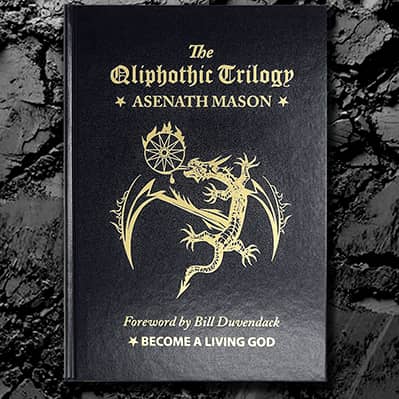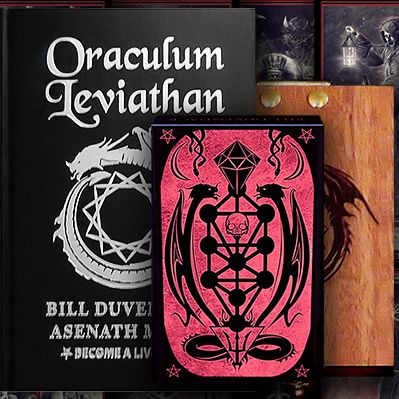My Account
The Leading Spirit Of ALL Western Demonology… Unlock The Magic Of The Demon Mephistopheles With A Masterful Left Hand Path Grimoire And Guide To Occult Art Of The Faustian Tradition
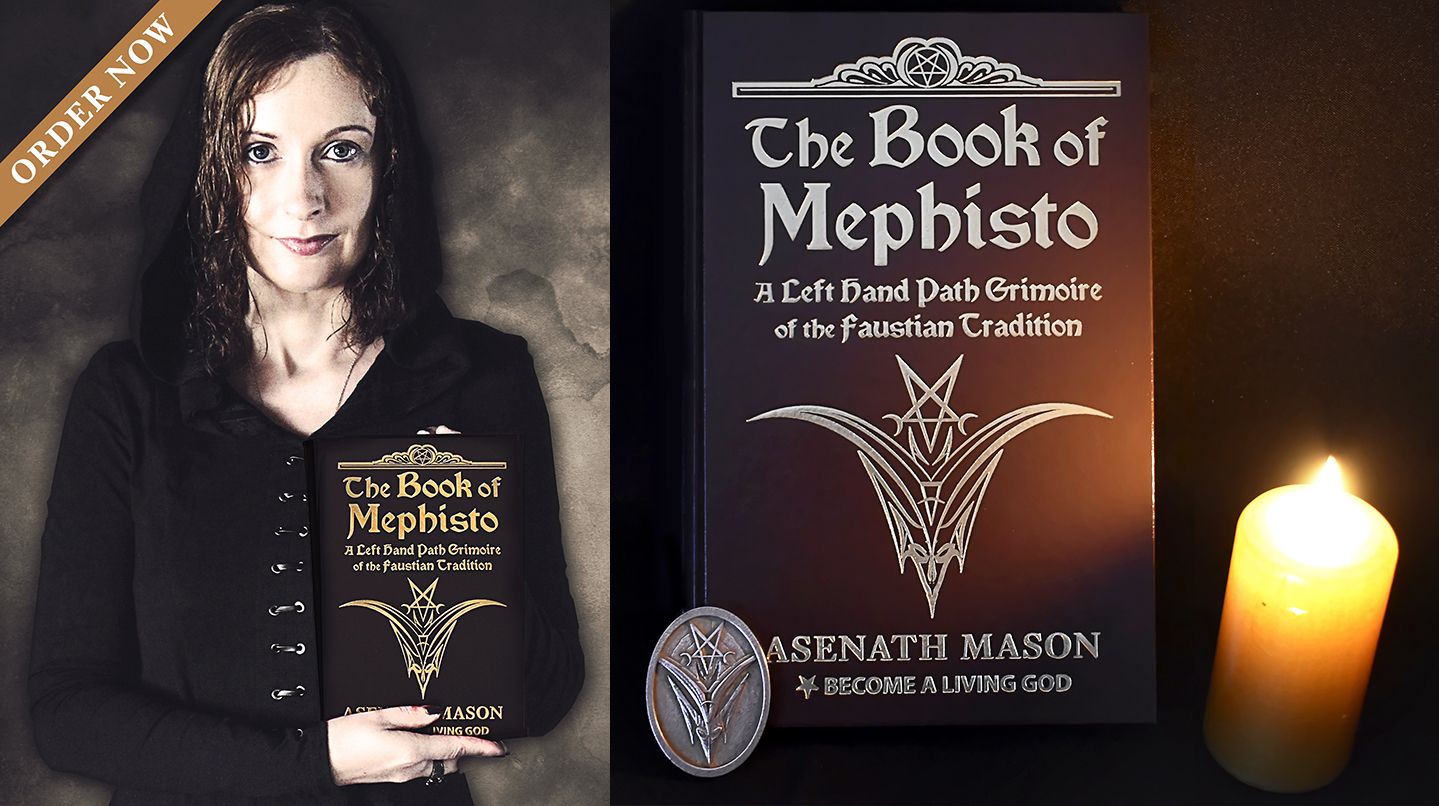
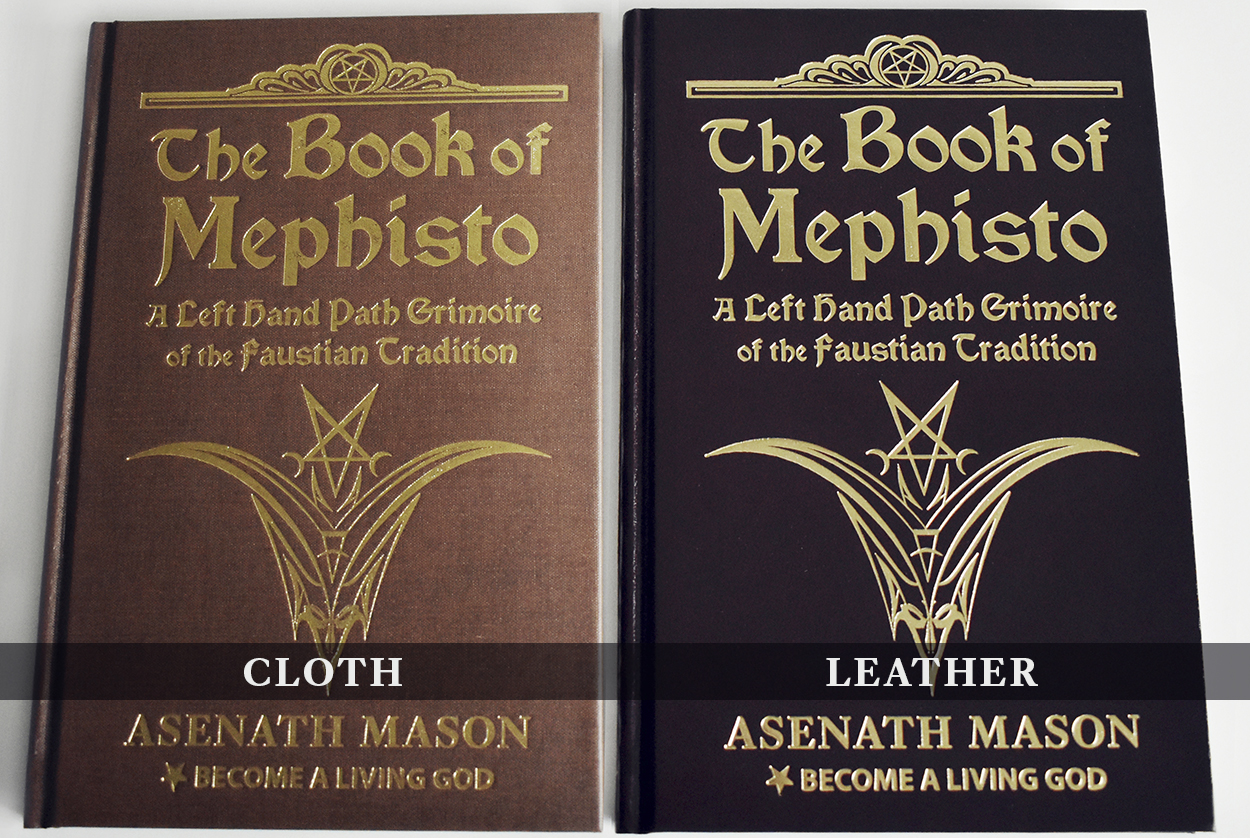
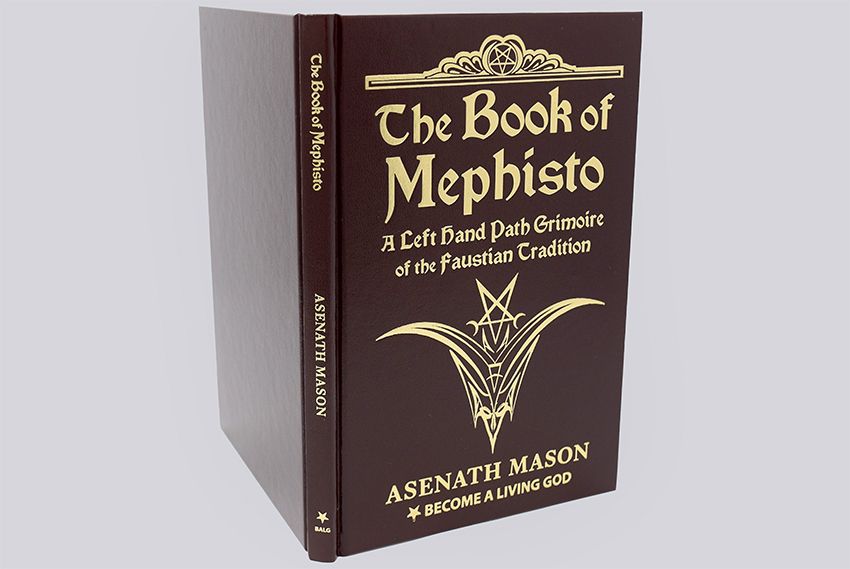
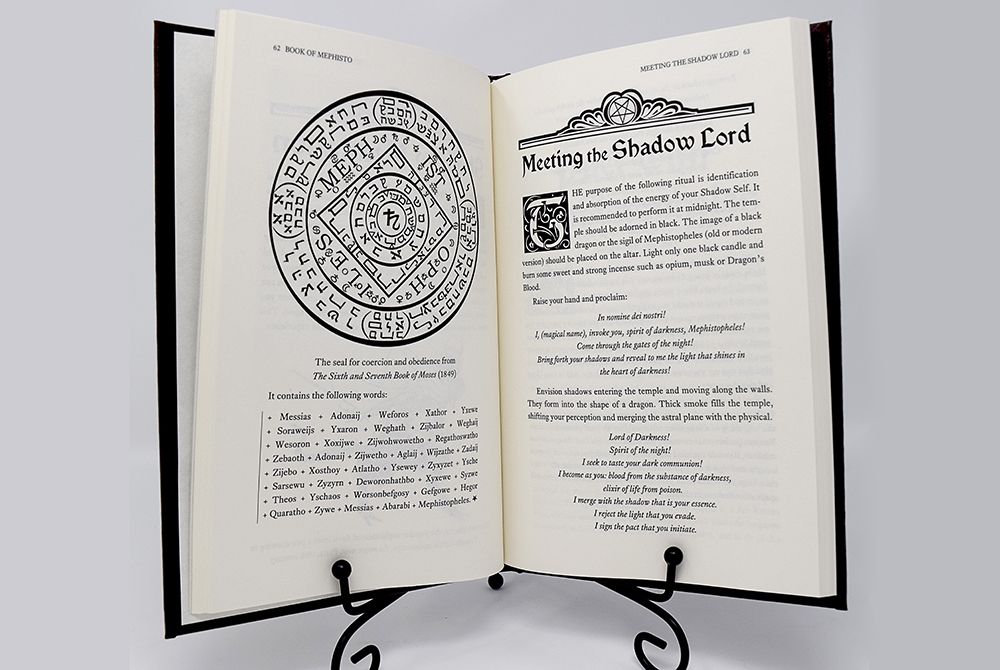
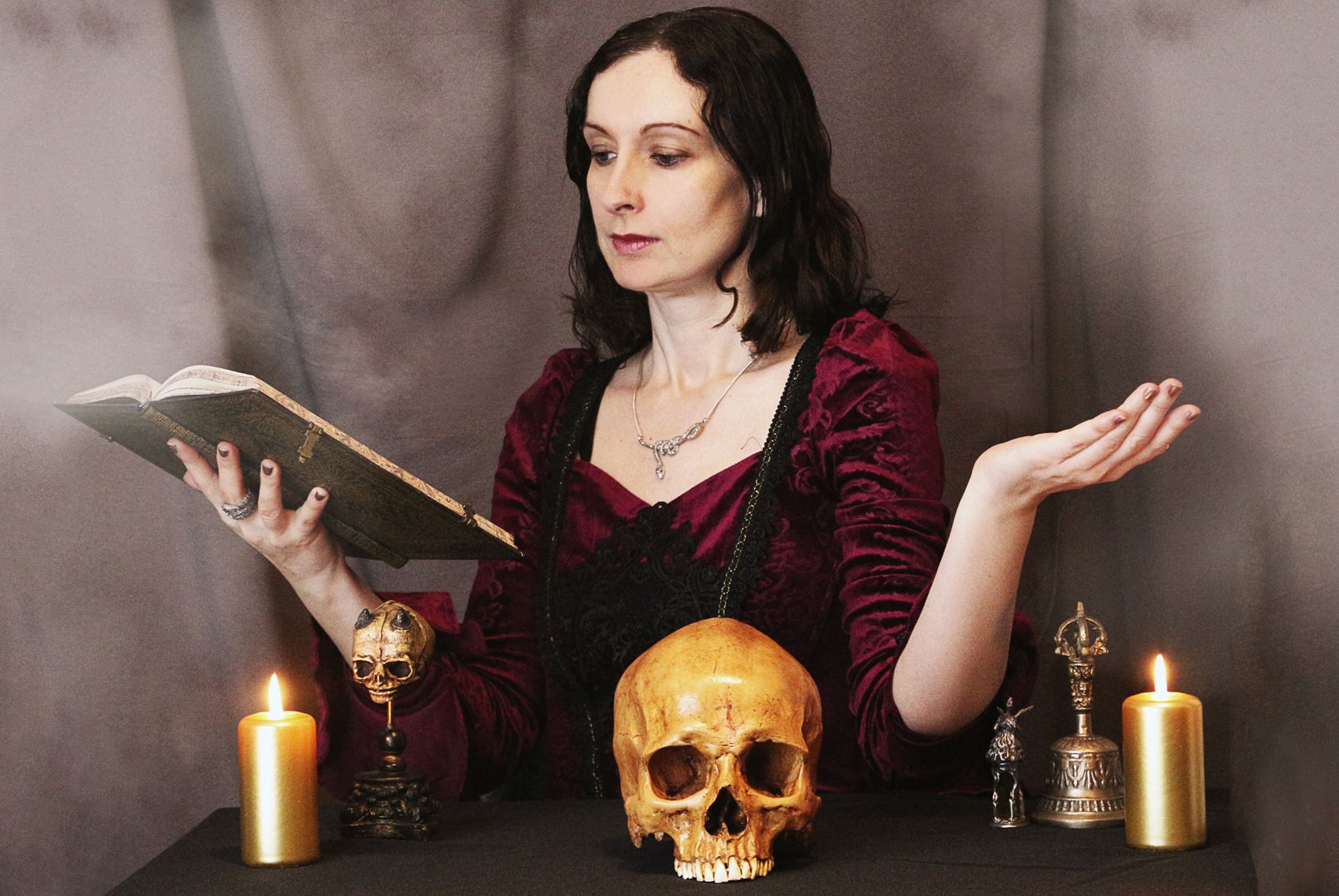
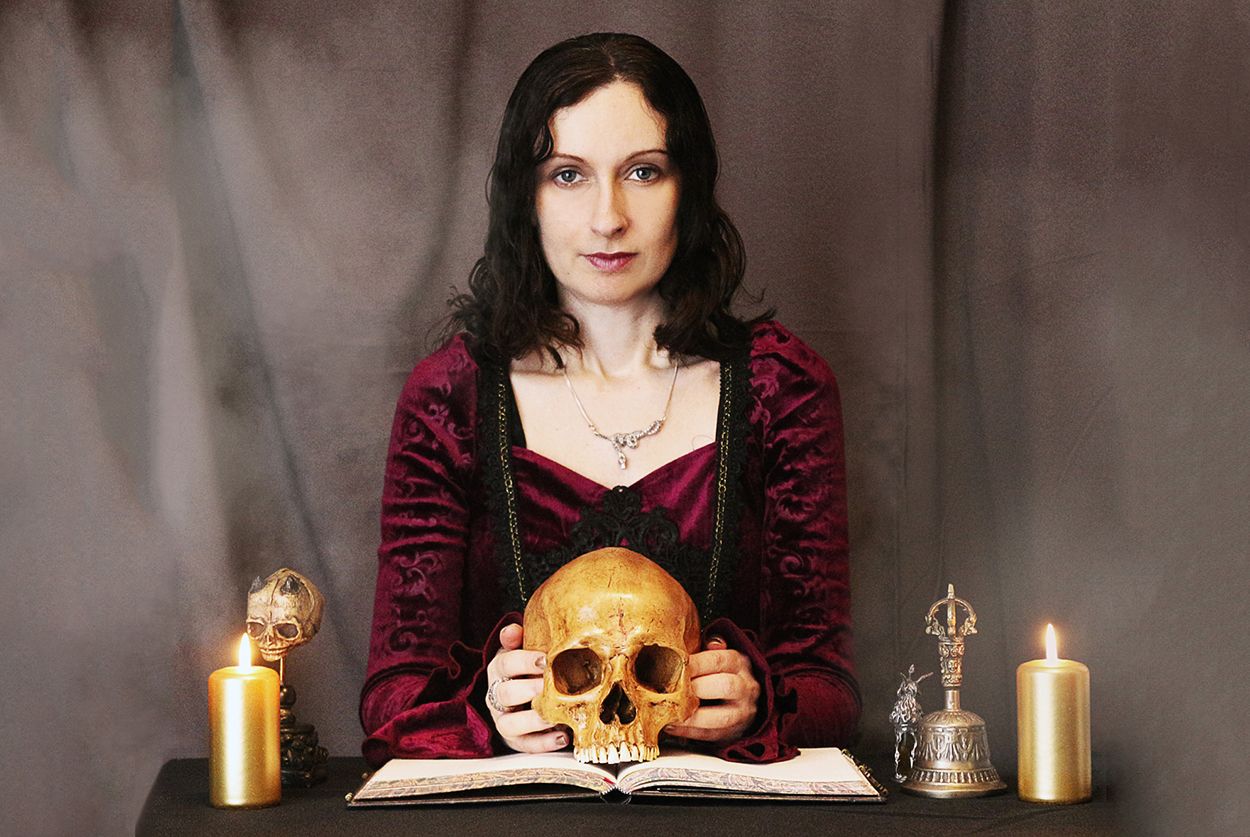






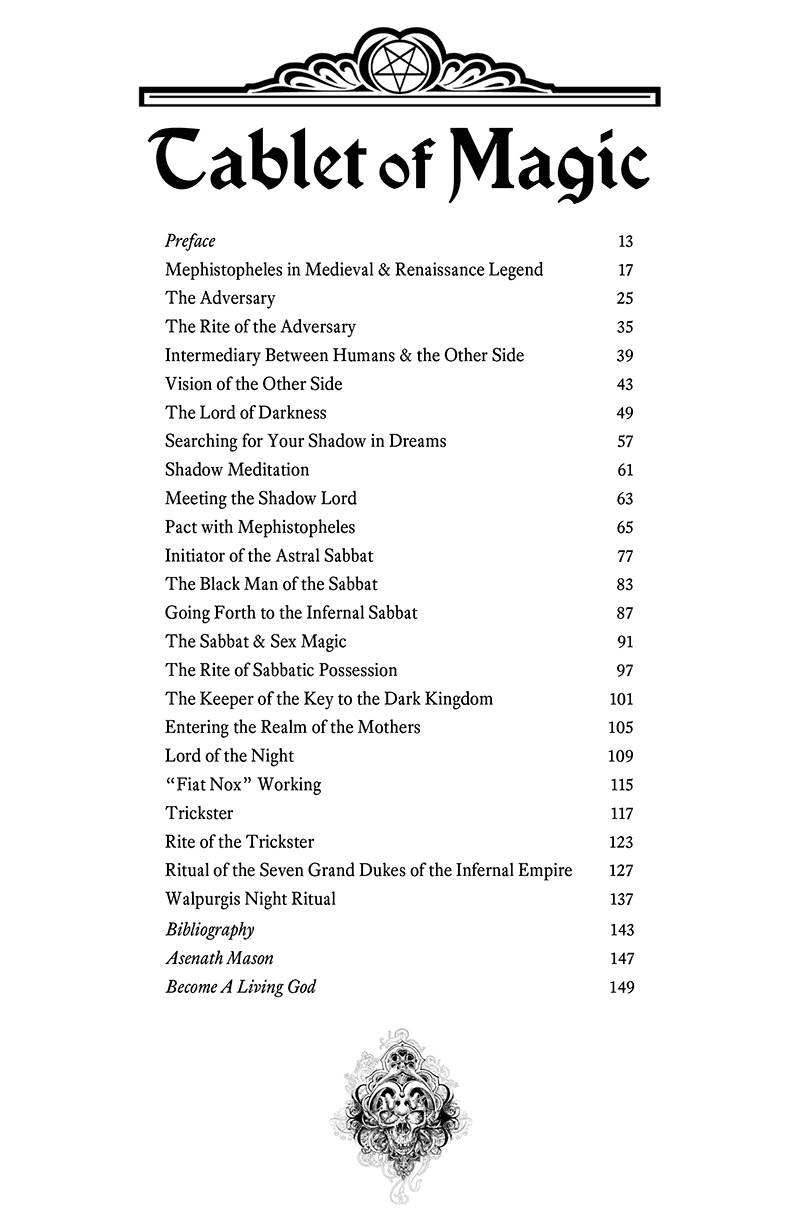

- The Book of Mephisto: Left Hand Path Grimoire of the Faustian Tradition
- Author & Illustrator: Asenath Mason
- Editor: Timothy
- Global Shipping: Ships within 2-3 business days
- Sample Chapter: Ch. 2 - The Adversary
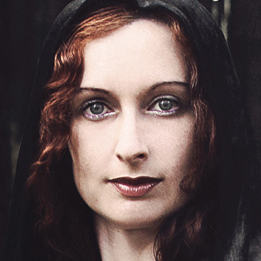
In The Book of Mephisto, you'll learn:
- The FIRST Left Hand Path grimoire to unlock the magic rituals, gnosis & powers of Mephisto
- The essential occult history of Mephistopheles from the Medieval Renaissance to Modern time
- A work-by-work chronicle of his black magic in famous literature, paintings, music, and plays
- Clairvoyantly received sigils, seals & portraits to experience ascent with Mephisto

Dear Friend,
Imagine...
A man in a black robe draws a circle on the ground and adds planetary characters with Hebrew inscriptions, as described in the books of Black Arts in his forbidden library. He raises the magic wand and exclaims the words of hellish incantation.
Alone in the chamber, suddenly a black figure appears in the circle, forming the shape of a monstrous dragon. The man exclaims another incantation. The shape in the circle changes into a hooded figure, resembling a monk, who looks at the summoner, awaiting his further action...
Exposed... The REAL Occult Truth Behind The "Black Magic" & "Witchcraft" Hysteria That Has Dominated Civilization From Medieval Time To Today
This imagined scene above is often presented in medieval and Renaissance literary sources and described in dozens of grimoires. In fact, black magic flourished across Europe in the 15th and the 16th centuries. No other period was so infused with such a wide interest in magic and the occult. The leading figures on the artistic, scholarly, and philosophical stage were believed to be practicing magicians, and this reputation was true in many cases.
To this day in modern time, a large intersection of people — everyone from atheists to New Agers to fundamentalist Christians — still accuse celebrities and politicians in popular culture of practicing "satanism."
Where did this ingrained conspiracy theory originate? And why has it endured between generations across entire periods of human civilization?
Mephistopheles As An Archetype Of The Sinful Temptation To Make A "Pact With The Devil" And Greed To "Sell Your Soul" And Conspiracy To "Join The Dark Side"
A prototype of the black magician was Theophilus, a medieval character who appeared in the thirteenth century story entitled Legenda Aurea written by Jacobus de Voraigne. Originally, Theophilus was a historical personage, an administrator of a church in Sicily. According to the medieval legend, he was dismissed by the church authorities and lost his position. To gain it back, he made a pact with the Devil. With the help of a necromancer, he summoned the Devil at midnight, renounced Christ and the saints and signed a contract with Satan in his own blood. The pact was successful and the Devil gave him his position back.
This and other stories were spreading quickly around Europe, evolving into the legend of a sorcerer who gained great power in exchange for selling his soul to the Devil. The legend eventually found epitome in the Renaissance figure of Faust. In an illustration to Christopher Marlowe's Doctor Faustus, we can see him standing in a magic circle and evoking a demon rising from the ground. He does not summon this hellish spirit because he desires wealth or earthly goods, even though that was the goal that most “sorcerers” wanted to achieve. He sells his soul in exchange for knowledge, for “wings” on which he can soar to celestial heights of the universe and descend into the depths of his own mind. Faust enters a path of self-salvation, self-deification, and wants to make himself equal to God. This is a path between and beyond good and evil, order and chaos, the rational and the irrational—between Heaven and Hell, yet providing access to both. That is why for his assistant and companion on this journey he chooses the spirit of transformation, the psychopomp, the trickster, the guide, and the initiator: Mephistopheles.
This book does not aspire to explore the Faustian Tradition in a vanilla academic context, nor is it a discussion of Renaissance magic as a whole. This book is a grimoire devoted solely to Mephistopheles—his aspects, forms, and masks in which he appears in esotericism and "forbidden" literature of the West. Texts and rituals presented here are written from the modern perspective, although certain concepts and ideas are derived from the old sources. Rituals and meditations described in the book were inspired by medieval and the Renaissance grimoires as well as by modern literary works of the Faustian Tradition: J.W. Goethe’s Faust, Mikhail Bulgakov’s The Master and Margarita, and several others.
In The Book of Mephisto, You'll Learn How To:
- Gain access to the only magical text dedicated to Mephistopheles that has ever been written
- Find out about the occult history of Mephistopheles from the oldest mentions and Renaissance grimoires to modern literary works of the Faustian Tradition
- Discover how to summon him as your personal assistant and initiator into mysteries of Luciferian magic
- Learn how to astral travel to the Witches’ Sabbat and how to descend to infernal dimensions with Mephisto as a guide
- Read about pacts with the Devil and learn how to summon spirits of the old grimoires in the modern context
- And MUCH more...
Mephisto Is The BACKBONE Of All Western Demonology, But No Left Hand Path Magician Had Ever Authored A Faithful Grimoire To Him… Until Book Of Mephisto 18 Years Ago
In medieval and Renaissance sources, Mephistopheles is one of the most popular demonic spirits. Some accounts ascribe him a high position in the infernal hierarchy while in others he is a mere invention of the authors who wrote and popularized Faust-inspired stories. As Mephistophiel, he is one of the seven great princes of Hell. It is also said that he was one of the first four angels who rebelled against God and fell from grace. In this context, he is mentioned alongside Lucifer, Belial and Leviathan. He is described in Cornelius Agrippa’s writings, as well as in many sixteenth century grimoires. Despite his popularity in visual arts and literary works, however, he remains the most ambiguous demonic entity of the whole Western Tradition.
In modern occultism, the role of Mephistopheles has been diminished and much less attention is now paid to this legendary character. Therefore, the goal of this book is to present the role of Mephistopheles in a new light—not only as a traditional principle of evil, but as an initiator of the Left Hand Path, the Adversary in the Christian Tradition from which he emerged, a spirit of Luciferian initiation and the personal Shadow that accompanies us throughout our whole lifetime.
My Fully Updated, Higher-Powered Second Edition Of This Previously Sold Out Grimoire... Back Finally For The First Time... Order The Book Of Mephisto Right Now And Get 10% Off
| The Book of Mephisto | Dark chocolate leather in limited edition |
| Autographed | Signed by author Asenath Mason |
| Grimoire Guard | Box to protect mint condition |
| Global Shipping | Receive in two weeks or less |
Place your order right now for The Book of Mephisto, and you'll get $20 off to save 10% for a limited time only.
Believe it or not, I first wrote this groundbreaking book 18 years ago and it was my first published work. At that time, I was deeply fascinated with the idea of Mephisto — an abridged version of the name “Mephistopheles” used for the purpose of this book — as an embodiment of Personal Shadow and I was working extensively with grimoires that mentioned him in their catalogue of spirits.
Apart from that, I was also searching for his appearances in literature and popular culture, and discovered that although not appearing under his medieval and Renaissance disguise, Mephisto has accompanied man throughout all the following centuries and is still present in the modern world, tempting us with “forbidden” knowledge and igniting our desire of transcendence. It is especially true regarding the Luciferian ethos—the search of power through self-knowledge and self-sacrifice.
The Quintessential Luciferian Ethos Hidden Inside The Infernal Spirit Of Mephistopheles... That Knowledge Is Power... That Truth Gives Wings To Your Eternal Ascent
Now, after almost two decades of my work with Luciferian gnosis, I can add a lot more to what was written in this book before. However, I still want to keep this book centered on Mephisto, my first initiator and guide on the path of self-deification known today as the Left Hand Path.
This book was written with love and passion, both for the path and the whole Faustian idea that “knowledge is power,” and my wish is that by reading it you too will become passionate about your path and persistent in your study. I also hope that you will find Mephisto as great an assistant as he has always been to me. Let him become our guide and companion again, as it was in the old times, but from a new, modern perspective.
| Tablet of Magic | |
| Front Matter - Preface | p.13 |
| Ch. 1 - Mephistopheles in Medieval & Renaissance Legend | p.17 |
| Ch. 2 - The Adversary | p.25 |
| Ch. 3 - The Rite of the Adversary | p.35 |
| Ch. 4 - Intermediary Between Humans & the Other Side | p.39 |
| Ch. 5 - Vision of the Other Side | p.43 |
| Ch. 6 - The Lord of Darkness | p.49 |
| Ch. 7 - Searching for Your Shadow in Dreams | p.57 |
| Ch. 8 - Shadow Meditation | p.61 |
| Ch. 9 - Meeting the Shadow Lord | p.63 |
| Ch. 10 - Pact with Mephistopheles | p.65 |
| Ch. 11 - Initiator of the Astral Sabbat | p.77 |
| Ch. 12 - The Black Man of the Sabbat | p.83 |
| Ch. 13 - Going Forth to the Infernal Sabbat | p.87 |
| Ch. 14 - The Sabbat & Sex Magic | p.91 |
| Ch. 15 - The Rite of Sabbatic Possession | p.97 |
| Ch. 16 - The Keeper of the Key to the Dark Kingdom | p.101 |
| Ch. 17 - Entering the Realm of the Mothers | p.105 |
| Ch. 18 - Lord of the Night | p.109 |
| Ch. 19 - "Fiat Nox" Working | p.115 |
| Ch. 20 - Trickster | p.117 |
| Ch. 21 - Rite of the Trickster | p.123 |
| Ch. 22 - Ritual of the Seven Grand Dukes of the Infernal Empire | p.127 |
| Ch. 23 - Walpurgis Night Ritual | p.137 |
| Appendix - Bibliography | p.143 |
I welcome you to come on this journey back to my roots as an author with me, to unearth the true hidden history of Mephistopheles, and to summon his magical powers to experience infernal ascent in YOUR life too.
Darkest Blessings,

-
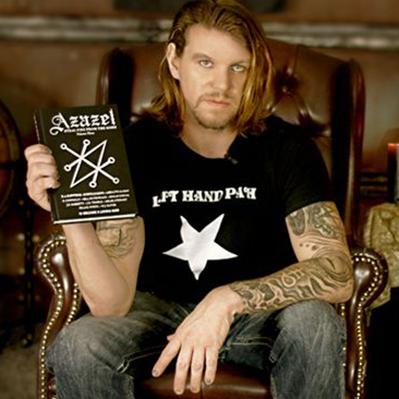 AZAZEL: Steal Fire From The Gods, Compendium 3 Nine Demonic Gatekeepers
AZAZEL: Steal Fire From The Gods, Compendium 3 Nine Demonic Gatekeepers -
 BELIAL: Without A Master, Compendium 1 Nine Demonic Gatekeepers
BELIAL: Without A Master, Compendium 1 Nine Demonic Gatekeepers -
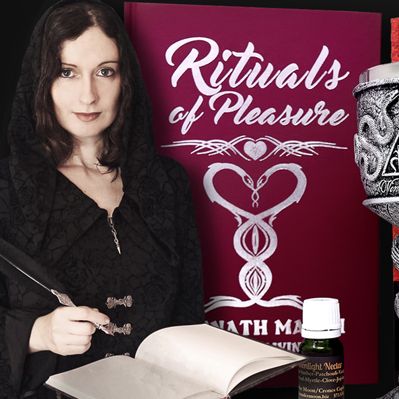 Rituals Of Pleasure: Sex, Astral Magic & Demonic Possession Asenath Mason
Rituals Of Pleasure: Sex, Astral Magic & Demonic Possession Asenath Mason -
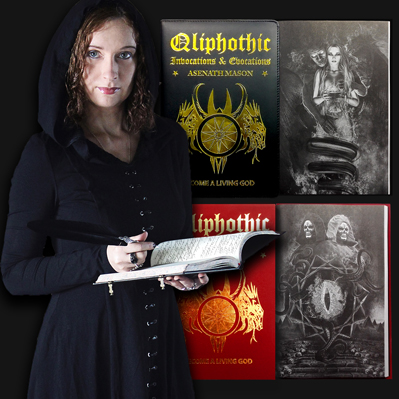 Qliphothic Invocations & Evocations — Book 2 of The Qliphothic Trilogy Asenath Mason
Qliphothic Invocations & Evocations — Book 2 of The Qliphothic Trilogy Asenath Mason -
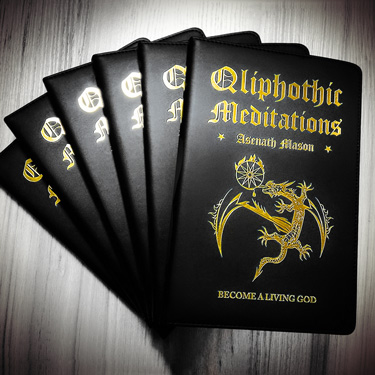 Qliphothic Meditations — Book 1 of The Qliphothic Trilogy Asenath Mason
Qliphothic Meditations — Book 1 of The Qliphothic Trilogy Asenath Mason -
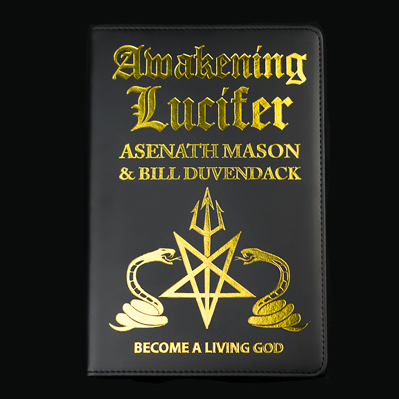 Awakening Lucifer Asenath Mason
Awakening Lucifer Asenath Mason -
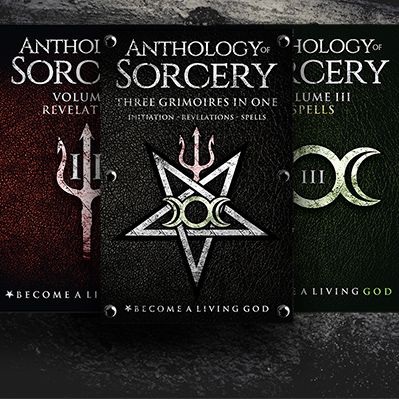 Anthology Of Sorcery: Three Grimoires In One Anthology of Sorcery
Anthology Of Sorcery: Three Grimoires In One Anthology of Sorcery
Meet The Author

Asenath is a top occult writer and clairvoyant artist in the world. She has authored over 10 books on magical and esoteric subjects, with a particular focus on Left Hand Path & Luciferian spirituality.
